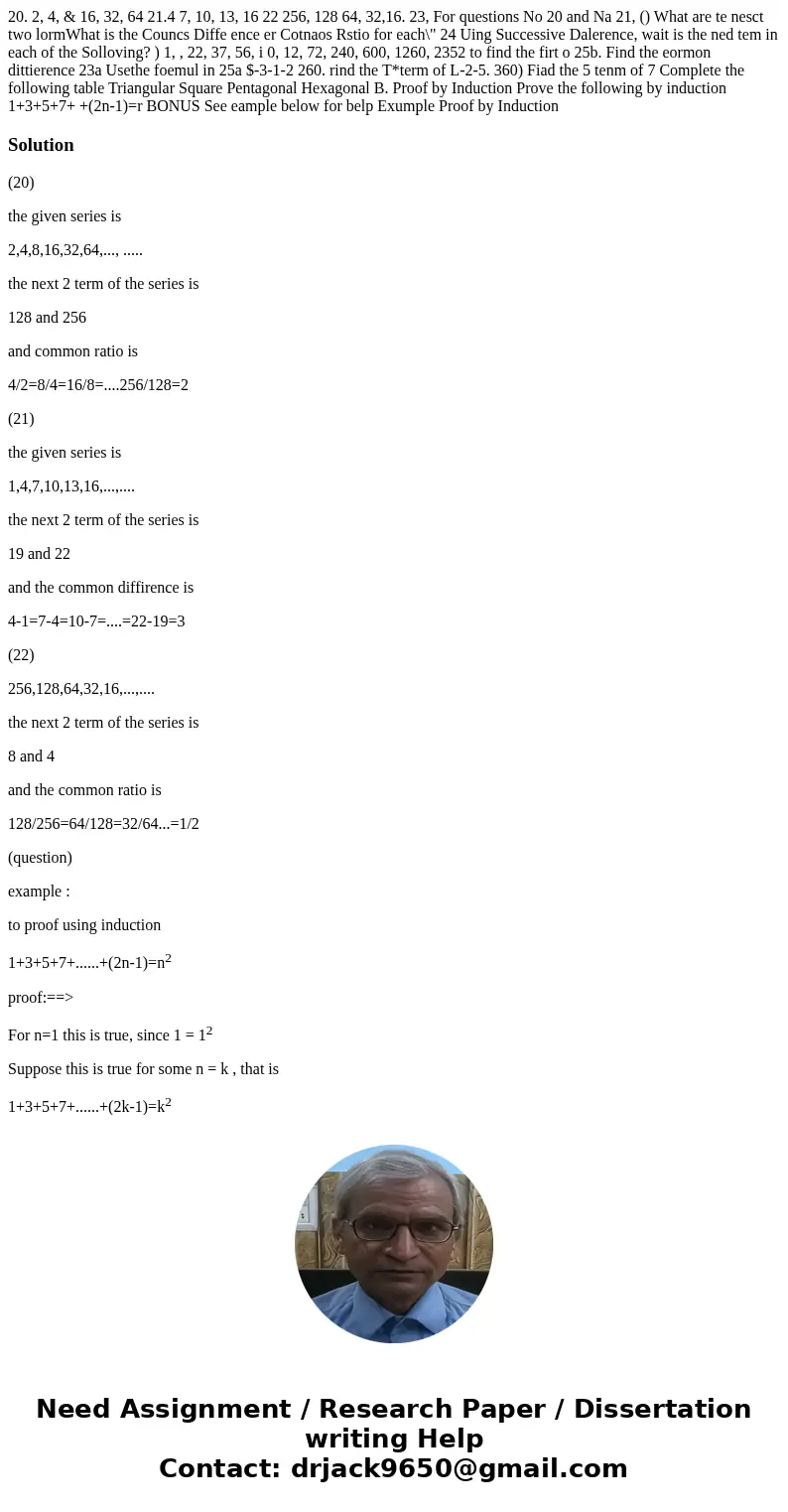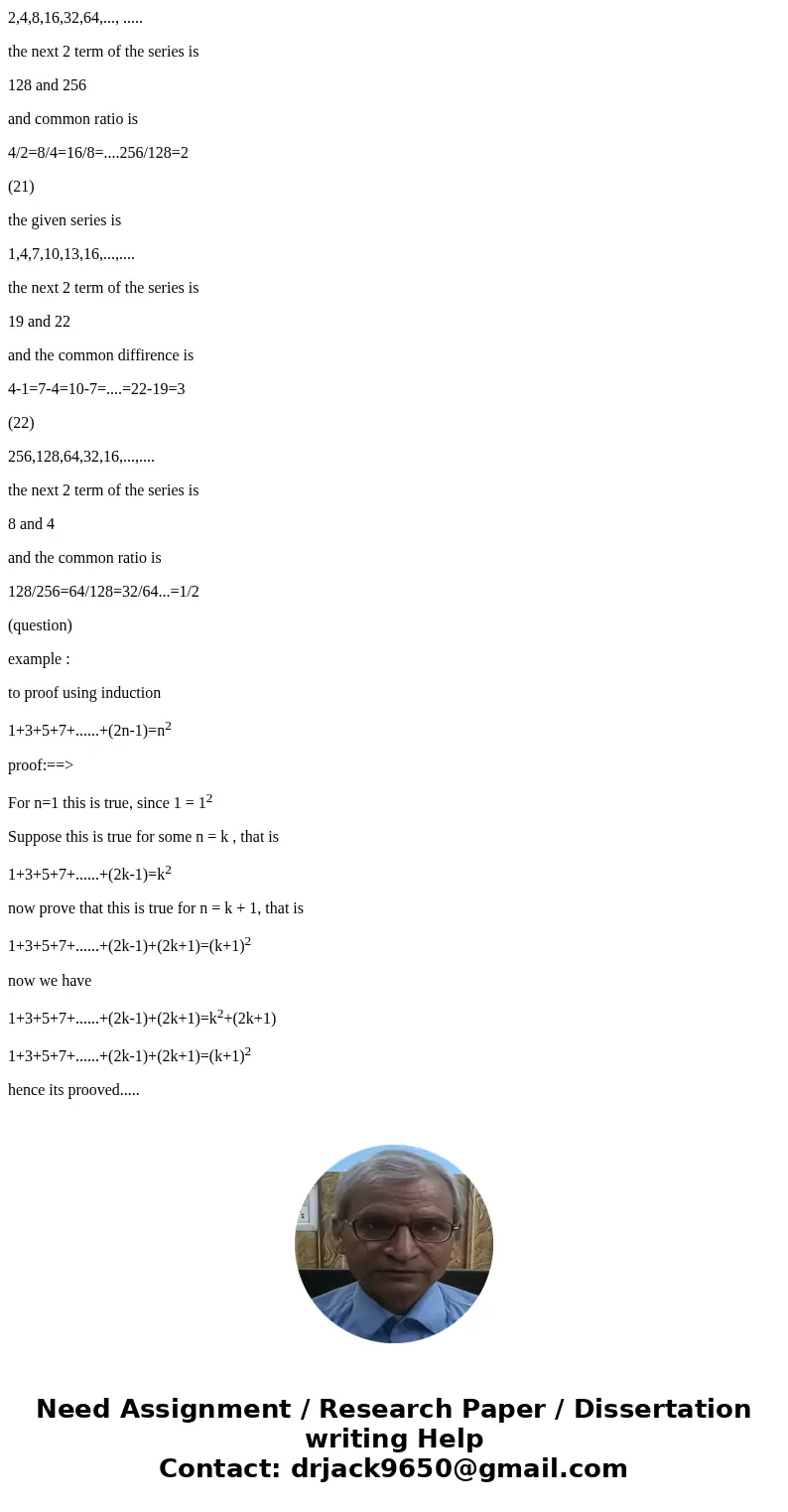20 2 4 16 32 64 214 7 10 13 16 22 256 128 64 3216 23 For qu
Solution
(20)
the given series is
2,4,8,16,32,64,..., .....
the next 2 term of the series is
128 and 256
and common ratio is
4/2=8/4=16/8=....256/128=2
(21)
the given series is
1,4,7,10,13,16,...,....
the next 2 term of the series is
19 and 22
and the common diffirence is
4-1=7-4=10-7=....=22-19=3
(22)
256,128,64,32,16,...,....
the next 2 term of the series is
8 and 4
and the common ratio is
128/256=64/128=32/64...=1/2
(question)
example :
to proof using induction
1+3+5+7+......+(2n-1)=n2
proof:==>
For n=1 this is true, since 1 = 12
Suppose this is true for some n = k , that is
1+3+5+7+......+(2k-1)=k2
now prove that this is true for n = k + 1, that is
1+3+5+7+......+(2k-1)+(2k+1)=(k+1)2
now we have
1+3+5+7+......+(2k-1)+(2k+1)=k2+(2k+1)
1+3+5+7+......+(2k-1)+(2k+1)=(k+1)2
hence its prooved.....


 Homework Sourse
Homework Sourse